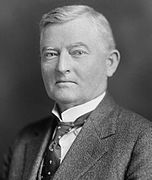
Back Wahlen zum Repräsentantenhaus der Vereinigten Staaten 1932 German Élections américaines de la Chambre des représentants de 1932 French 1932년 미국 하원의원 선거 Korean
| ||||||||||||||||||||||||||||||||||||||||||||||||||||||||||||||||||||
All 435 seats in the United States House of Representatives 218 seats needed for a majority | ||||||||||||||||||||||||||||||||||||||||||||||||||||||||||||||||||||
|---|---|---|---|---|---|---|---|---|---|---|---|---|---|---|---|---|---|---|---|---|---|---|---|---|---|---|---|---|---|---|---|---|---|---|---|---|---|---|---|---|---|---|---|---|---|---|---|---|---|---|---|---|---|---|---|---|---|---|---|---|---|---|---|---|---|---|---|---|
| ||||||||||||||||||||||||||||||||||||||||||||||||||||||||||||||||||||
 | ||||||||||||||||||||||||||||||||||||||||||||||||||||||||||||||||||||
| ||||||||||||||||||||||||||||||||||||||||||||||||||||||||||||||||||||
The 1932 United States House of Representatives elections were elections for the United States House of Representatives to elect members to serve in the 73rd United States Congress. They were held for the most part on November 8, 1932, while Maine held theirs on September 12. They coincided with the landslide election of President Franklin D. Roosevelt.
The inability of Herbert Hoover to deal with the Great Depression was the main issue surrounding this election,[2][3] with his overwhelming unpopularity causing his Republican Party to lose 101 seats to Roosevelt's Democratic Party and the small Farmer–Labor Party, as the Democrats expanded the majority they had gained through special elections to a commanding level.
This round of elections was seen as a referendum on the once popular Republican business practices, which were eschewed for new, more liberal Democratic ideas. This was the first time since 1894 (and the last time as of 2024) that any party suffered triple-digit losses, and the Democrats posted their largest net seat pick-up in their history. These elections marked the beginning of a period of dominance in the House for the Democrats: with the exception of 1946 and 1952, the party would win every House election until 1994.
This was the first election after the congressional reapportionment based on the 1930 census, which was the first reapportionment since the passage of the Reapportionment Act of 1929 that permanently capped the House membership at 435 seats. Since no reapportionment (and in nearly all states no redistricting) had occurred after the 1920 census, the district boundary changes from the previous election were quite substantial, representing twenty years of population movement from small towns to the more Democratic cities.
Cite error: There are <ref group=lower-alpha> tags or {{efn}} templates on this page, but the references will not show without a {{reflist|group=lower-alpha}} template or {{notelist}} template (see the help page).
- ^ a b "Election Statistics". Office of the Clerk, U.S. House of Representatives. Retrieved November 14, 2010.
- ^ "Elections in Hard Times -- EDITORIAL". New York Times. November 13, 1932. Retrieved April 6, 2014.
- ^ Arthur Krock (November 9, 1932). "Sweep is National". New York Times. Retrieved April 6, 2014.
© MMXXIII Rich X Search. We shall prevail. All rights reserved. Rich X Search

